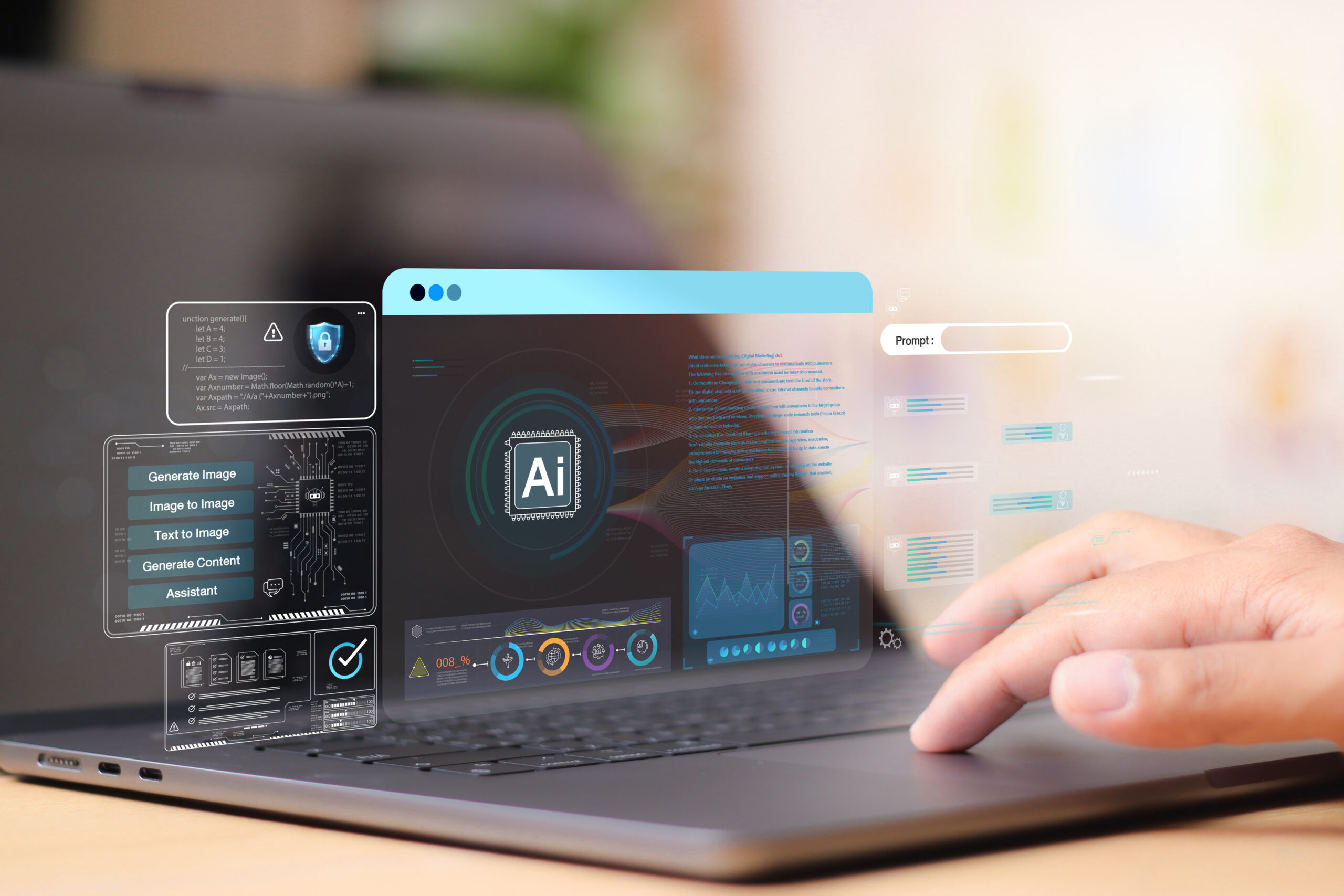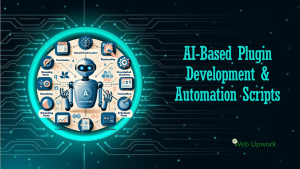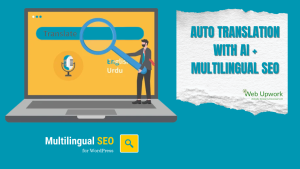In today’s fast-moving digital world, the phrase “one size fits all” clearly does not fit anymore—especially when it comes to websites and online experiences. I believe that Personalised Website Experiences using AI are not just a luxury anymore; they are becoming essential. In this blog I will share what I see happening, why it matters, how it is being used, and what we as website owners or testers (or even users) should watch out for.
What’s happening in the news
Recently, multiple reports from India show how brands, websites and digital platforms are using AI to personalise experiences of visitors and customers. For example:
A report states that Indian retailers are increasingly using AI-driven personalisation tools to understand browsing and buying habits, regional preferences, and to tailor homepage layouts, offers, product bundles, etc.
Another study highlights the “privacy vs convenience” tension: while consumers like relevant content, they are increasingly worried about how their data is being collected, used and shared.
In an Indian context, a consultancy found that 82% of Indian consumers believe that AI will significantly improve their purchase experience.
From my perspective, these developments signal that if your website is not prepared to deliver a more tailored, intelligent experience, you risk falling behind — not just in technology, but in user expectation.
Why personalised website experiences matter
Here are the key reasons why I feel strongly that personalisation via AI should be a priority:
Better engagement
When a website “knows” what a visitor is likely looking for (based on past behaviour, clicks, region, device), it can show content or offers more relevant to them. This means more time spent, fewer bounces, and higher conversion.
In India, small brands are using AI to mimic what big brands do- recommending products, showing regional language bots, adjusting the homepage- so they are not just competing, but thriving.
Improved user experience (UX)
A website experience that adapts (layout, suggestions, chatbots) makes the visitor feel cared for. That builds trust and can lead to loyalty.
When you combine algorithms with good UX design, visitors feel the site “gets them” instead of being generic.
Higher business value
The reports suggest that personalisation can lead to higher sales, better marketing ROI. For example: brands that report good personalisation are more likely to exceed revenue goals.
Using AI also helps cut waste in marketing (less generic mass messages, more targeted ones) and helps forecast demand better (so less stock issues etc).
Competitive differentiation
If your website continues to present the same generic experience while competitors are presenting smart personalised ones, users will prefer the smarter ones.
For an Indian audience, localised personalisation (language, regional preferences) can be a strong differentiator.
Key elements of a personalised website experience
From my point of view, building personalised website experiences using AI involves several components. If you are planning for it (as a company, website owner, tester, developer) these are what to consider:
Data collection & analysis
Collecting behavioural data (pages visited, time spent, device, region), transactional data (what user bought), and contextual data (time, location, previous visits). AI uses this to build user profiles and predictions.Recommendation engine
Based on the data, recommend products/pages/sections that align with user’s past behaviour or likely next step. For websites it might be “You might also like”, “Because you viewed. “Top picks for you”Dynamic content & layout
The website adapts what it shows: e.g., hero banner changes, menu suggestions differ, language or region specific content shows. For example a user from Mumbai might see different offers than one in Kolkata.Chatbots & conversational AI
AI-powered chatbots that greet returning users, recall their history, offer personalised help. The “hello again” feeling is powerful.Predictive & proactive service
Not just responding to user clicks, but anticipating what user may need next — for example reminding about abandoned cart, suggesting complementary items. Small brands in India are doing this.Privacy & consent mechanisms
Simply personalising is not enough; the user must trust you. Data collection must be transparent, consent given, privacy respected. The study on India emphasises this.
What this means for website/blog owners
Since I’m part of the digital ecosystem (website owner, tester, or even a content creator), this trend affects me directly. Here are my thoughts:
If I own a website (for business or blog), I should think of personalisation from the beginning, not as an afterthought. That means: planning user-flows, collecting minimal but useful data, using AI tools or frameworks that support dynamic content.
As a tester (given my QA background) I need to include test cases for personalised experiences: Check that a returning visitor sees different content than a new visitor; the right region shows correct language; offers aren’t repeated too many times; if data is wrong, the experience still degrades gracefully.
I must balance personalisation vs privacy: Users often prefer human-touch and may distrust purely algorithmic experiences. For instance, a report found 88% of consumers still prefer human interaction over AI alone. The Indian Express So the “personalisation” must still feel natural and human-centric, not creepy or robotic.
For my blog content: I should think how to personalise content for different reader segments. For example: returning readers vs new; readers from India vs abroad; readers on mobile vs desktop. This can help improve retention and make my blog more relevant.
Budget and technology are not always blockers: The news indicates small brands are using affordable AI personalisation tools (low-code chatbots, affordable recommendation engines) and doing quite well in India. So even for mid-sized websites/blogs one can adopt these practices rather than delay.
A few fun insights
It’s interesting how an Indian D2C (direct-to-consumer) brand can bundle products based on browsing behaviour: one user sees “pet care + toys”, another sees “fitness + wellness” — all based on the AI’s analysis of what they showed interest in. That feels like walking into a shop where the shopkeeper already knows what you like.
Sometimes I myself feel the “personalised” website is a little too good — I see an offer and think: “Hey, how did they guess I wanted this?” But then I worry: did they really track me too much? That tension is real.
For Indian websites/blogs, the local language or regional preference piece is important. If a website personalises only in English but ignores Hindi or regional languages, they are missing a huge chunk of users. The study shows that personalisation in India isn’t just about “which product” but also “which language, which region, which device”
Challenges & what to watch out for
From my viewpoint, there are a number of pitfalls or challenges when implementing personalisation via AI on websites:
Poor data quality: If the raw data (user behaviour, region, preferences) is inaccurate or patchy, the personalisation may go wrong — showing irrelevant suggestions, annoying the user.
Over-personalisation / “creepy” effect: When the website starts showing things that feel too tuned, the user may feel “watched” or uncomfortable. The balance is delicate.
Privacy and regulatory compliance: In India the Digital Personal Data Protection Act, 2023 (DPDP Act) and other rules require that users know what data is collected, how it’s processed, and are given rights like correction or erasure. The marketing study emphasises this.
Technology & integration complexity: For many websites, integrating AI-recommendation engines, chatbots, and dynamic layouts is non-trivial. Without good planning, you may end up with personalised experiences that glitch, load slowly, or inconsistent across devices.
Cost vs benefit: While small brands are doing well, you still need to ensure that the investment in personalisation gives real return (better retention, more conversions) not just hype. The expectation gap is real: brands believe they personalise more than consumers perceive.
Maintaining human-touch: As mentioned, consumers still prefer human interaction; so the website experience must feel human-centred, not just algorithm-driven. Chatbots that sound robotic could harm rather than help.
What I recommend for websites (especially in Indian context)
Here are actionable suggestions from me for website owners/blogs in India:
Start with segmentation: Even without full AI, begin by identifying key segments (new vs returning visitors; mobile vs desktop; region/city; language). Later add AI to refine within those segments.
Use recommendation features wisely: On blogs, show “you might like these posts” tailored to reader’s past reading; or show regional posts if you detect region. On e-commerce sites show related products.
Localise: Use regional languages (Hindi, Marathi, Tamil, etc) where relevant; personalise offers based on regional festivals, preferences. Indian users appreciate this.
Respect privacy: Make your data-collection transparent. Provide clear consent mechanisms. Show users you respect their data. That builds trust.
Monitor & measure: Use analytics to check whether personalised content is performing better (lower bounce, higher conversion) vs generic. If not, iterate.
Keep fallback/defaults good: Even if personalisation fails (no data, first-time visitor), ensure the generic experience is still good. The user should not feel the website is broken.
Blend human & AI: For example, if you use a chatbot, allow easy access to human support; or show a human-looking message alongside “Recommended for you”. This retains the human touch.
Test across devices: Many users in India use mobile first. Ensure personalised layouts load fast on mobile, adjust for bandwidth.
Start small: You don’t have to personalise everything at once. Begin with one area (homepage suggestions, one chatbot flow) and expand. The news shows small brands are beginning modestly.
In conclusion, I firmly believe that personalising website experiences with AI is the next step in delivering digital excellence. For users today, what we expect is that a website understands our context, language, device, region, and shows us what we need without making us dig. For website owners, the opportunity is huge: better engagement, loyalty, conversions. But the journey is also complex: we need to watch data quality, privacy, integrate thoughtfully, and keep the human element alive.
Being in India, with immense diversity of languages, devices (many mobile users), regions and budgets, I think the challenge is greater — but so is the payoff. A localised, personalised website experience can win over users more effectively than global “one-size” solutions.
So if you are building or maintaining a website today — ask yourself:
Does my website adapt to the user, or expect the user to adapt?
Are we collecting the right data (ethically) to personalise smartly?
Are we measuring whether personalisation is actually working for us?
And importantly, are we ensuring the user still feels in control of their experience?
And in today’s crowded digital space, that’s the difference between being “just another site” and being “the site users prefer”.
Product Schema
{% if template.name == 'product' %}
<script type="application/ld+json">
{
"@context": "https://schema.org/",
"@type": "Product",
"name": "{{ product.title }}",
{%- if product.featured_media -%}
{%- assign media_size = product.featured_media.preview_image.width | append: 'x' -%}
"image": [
{{ product.featured_media | img_url: media_size | prepend: "https:" | json }}
],
{%- endif -%}
"description": {{ product.description | strip_html | json }},
"sku": "{{ current_variant.sku }}",
"mpn": "{{ current_variant.barcode }}",
"brand": {
"@type": "Brand",
"name": "District A Design"
},
"review": {
"@type": "Review",
"reviewRating": {
"@type": "Rating",
"ratingValue": "5",
"bestRating": "5"
},
"author": {
"@type": "Person",
"name": "Example site"
}
},
"aggregateRating": {
"@type": "AggregateRating",
"ratingValue": "5",
"reviewCount": "5"
},
"offers": {
"@type": "Offer",
"url" : {{ shop.url | append: variant.url | json }},
"priceCurrency" : {{ cart.currency.iso_code | json }},
"price" : {{ current_variant.price | divided_by: 100.00 | json }},
"priceValidUntil": "{{ 'now' | date: '%s' | plus: 31536000 | date: '%Y-%m-%d' | uri_encode | replace:'+','%20' }}",
"itemCondition": "https://schema.org/NewCondition",
"availability" : "http://schema.org/{% if product.available %}InStock{% else %}OutOfStock{% endif %}"
}
}
</script>
{% endif %}
BreadcrumbList Schema
<script type="application/ld+json">
{
"@context": "https://schema.org",
"@type": "BreadcrumbList",
"itemListElement": [{
"@type": "ListItem",
"position": 1,
"name": "Home",
"item": "https://Examplesite.com/"
},{
"@type": "ListItem",
"position": 2,
"name": "{{ product.title }}",
"item": "{{ shop.url }}{{ product.url }}"
}]
}
</script>





